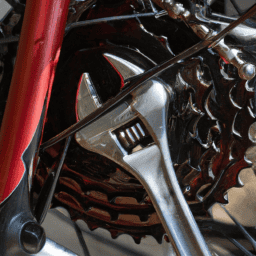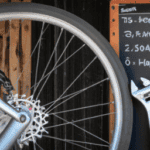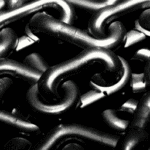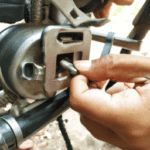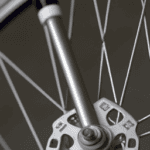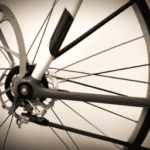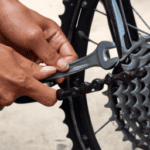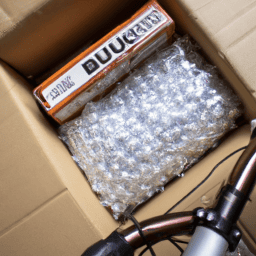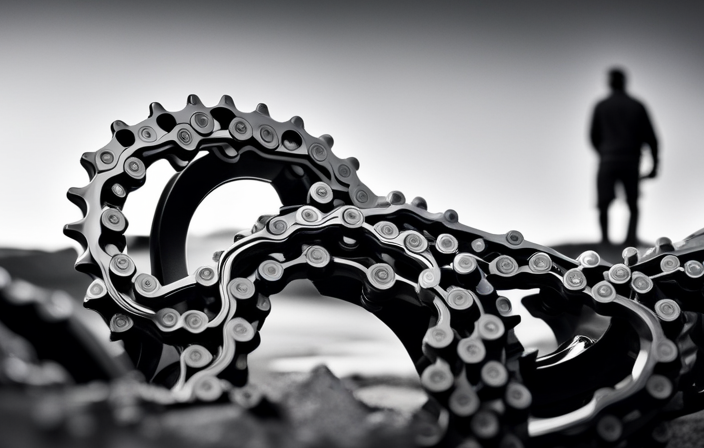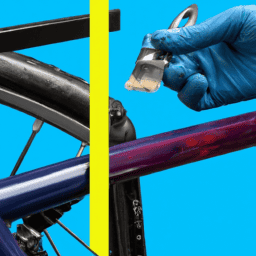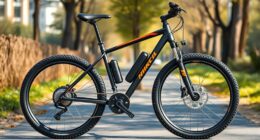Were you aware that consistent upkeep can prolong the lifespan of your bicycle by as much as thirty percent? As an individual who depends on my bicycle for both commuting and fitness activities, I recognize the significance of maintaining it in pristine condition.
One crucial aspect of bike maintenance is the tune-up. But what does a bicycle tune-up consist of exactly? In this article, I’ll break down the components of a tune-up, discuss when to seek professional help, and offer tips for maintaining your bike post-tune-up.
Whether you’re a seasoned cyclist or just starting out, understanding the ins and outs of a bicycle tune-up can help you keep your ride smooth and safe.
Key Takeaways
- A bicycle tune-up is crucial maintenance that can extend a bike’s life by up to 30%.
- Basic maintenance tasks such as cleaning and lubricating the chain, adjusting brakes and gears, and tightening loose bolts can be done at home.
- Some issues may require professional help, such as complicated brake adjustments, wheel truing, and bottom bracket repairs.
- A DIY bicycle tune-up kit should include Allen wrenches, screwdrivers, a chain tool, a pedal wrench, a spoke wrench, and a bike stand, and it’s crucial to have a bike repair manual or watch online tutorials to gain knowledge about the bike’s components and how to diagnose and fix problems.
The Importance of Bicycle Maintenance
You gotta take care of your bike if you want it to ride smoothly and avoid any frustrating breakdowns on your next adventure. Regular bicycle maintenance can go a long way in ensuring that your bike remains in top condition for years to come.
While some may argue that the cost of maintenance is not worth the effort, the benefits of regular upkeep far outweigh any potential costs. By taking care of your bike, you can prevent any potential issues from arising in the first place.
Regular maintenance can help identify any small problems before they turn into big ones, saving you both time and money in the long run. Additionally, a well-maintained bike will ride smoother, shift better, and stop more effectively, making for a more enjoyable riding experience.
It’s important to note that bicycle maintenance doesn’t have to be complicated or time-consuming. With a few basic tools and a little bit of know-how, most maintenance tasks can be completed in a matter of minutes.
Now, let’s dive into the components of a bicycle tune-up.
Components of a Bicycle Tune-Up
Get ready to experience a smooth ride with a freshly lubricated chain, well-adjusted brakes, and properly inflated tires as part of a professional bicycle tune-up.
A bike tune-up checklist includes inspecting and adjusting the shifting, cleaning and lubricating the chain, adjusting the brakes, truing the wheels, tightening loose bolts, and inspecting the tires for wear and damage.
Common bike issues that a tune-up can resolve include noisy shifting, brake squeaking or rubbing, loose or damaged spokes, and a wobbly or unbalanced wheel.
A well-executed tune-up can also prolong the life of your bike’s components and prevent unexpected breakdowns on your rides. It’s recommended to have your bike tuned up at least once a year, or more frequently if you ride frequently or in harsh conditions.
With a professional tune-up, you can ride confidently knowing that your bike’s in top condition.
In the subsequent section, I’ll discuss the tools and knowledge needed for DIY tune-ups.
Tools and Knowledge Needed for DIY Tune-Ups
Assembling a DIY bicycle tune-up kit is like putting together a toolbox for a mechanic – having the right tools and knowledge is essential for a successful tune-up.
Some essential tools for a bicycle tune-up include a set of Allen wrenches, screwdrivers, a chain tool, a pedal wrench, a spoke wrench, and a bike stand. These tools can help you adjust brake pads, derailleur, chain, pedals, and spokes, which are common issues that affect a bike’s performance.
Additionally, it’s crucial to have a bike repair manual or watch online tutorials to gain knowledge about the bike’s components and how to diagnose and fix problems.
It’s important to note that while DIY tune-ups can save you money and give you a sense of accomplishment, some issues may require professional help. For example, if your bike needs major repairs such as wheel truing, headset adjustment, or bottom bracket replacement, it’s best to take it to a professional bike shop.
Additionally, if you’re not comfortable working with certain components or if you’re unsure about the proper technique, seeking professional help can save you from causing further damage to your bike.
When to Seek Professional Help
It’s crucial to note that some bike issues may require professional help, such as major repairs or working with unfamiliar components. Common issues that may need the expertise of a bike mechanic include complicated brake adjustments, wheel truing, and bottom bracket repairs. Attempting to fix these problems without the proper knowledge and tools can lead to further damage and potentially dangerous riding conditions.
However, there are also many DIY solutions for minor bike issues that can save you money and time. Basic maintenance tasks such as cleaning and lubricating your chain, adjusting your brakes and gears, and tightening loose bolts can all be done at home with the right tools and resources. Cost effective alternatives to professional help include utilizing online tutorials and instructional videos, seeking advice from experienced cyclists, and investing in a good bike maintenance book. By learning how to tackle basic bike maintenance, you can improve your riding experience and prolong the lifespan of your bike.
When it comes to maintaining your bike post-tune-up, it’s important to establish a regular cleaning and inspection routine to catch any issues before they become major problems.
Maintaining Your Bike Post-Tune-Up
After a professional bike tune-up, keeping up with regular cleaning and inspection can help prevent future issues and extend the life of your ride.
One of the most important parts of maintaining your bike post-tune-up is bike cleaning. Do not use high-pressure water to clean your bike, as it can damage the bearings and seals. Instead, use a soft sponge or cloth and mild detergent to clean the frame, wheels, and other components.
Pay extra attention to the drivetrain, as it accumulates a lot of dirt and grime. Use a degreaser and a brush to remove dirt from the chain, cassette, and chainrings. Rinse well with water and dry everything thoroughly.
Another essential part of maintaining your bike is lubrication. Lubricating your bike properly can reduce friction, prevent wear, and protect against rust and corrosion. Apply lubricant to the chain, derailleurs, brakes, and other moving parts, following the manufacturer’s instructions.
Wipe off excess lubricant with a clean cloth to prevent attracting dirt and dust. Do not use too much lubricant, as it can attract dirt and gum up the components. Keep in mind that lubrication needs vary depending on the weather conditions, terrain, and riding style, so check your bike regularly and apply more lubricant as needed.
By following these simple bike cleaning and lubrication techniques, you can keep your bike running smoothly and enjoy your rides for years to come.
Frequently Asked Questions
Should I tune up my bike myself or take it to a professional shop?
I weighed my options and decided to try a DIY bike tune up, but quickly found it more complicated than expected. I eventually took my bike to a professional shop and was impressed by their expertise and thoroughness. Consider your skill level and time constraints when deciding between DIY bike tune up tips and professional bike tune up services.
How often should I get a bike tune-up?
I recommend getting a bike tune-up once a year or after 1000 miles of riding. Regular tune-ups improve bike performance, prevent breakdowns, and prolong the life of components. Look out for signs like chain skipping or squeaky brakes.
What kind of lubricant should I use on my bike chain?
For my bike chain, I use a wet lubricant for its durability and protection against harsh weather. I apply it evenly by first cleaning the chain and then adding the lubricant in small drops while pedaling backwards.
Can I ride my bike immediately after a tune-up, or do I need to wait for something to dry or settle?
Can I ride my bike immediately after a tune-up? Yes, but with special care. Check brakes, bolts, and chain lubrication. Allow time for adjustments to settle before taking on long rides.
How long does a typical bike tune-up take, and can I wait for it at the shop or do I need to leave my bike there?
I can typically wait for my bike tune-up at the shop, but the waiting time can vary depending on the services needed. Some shops offer amenities like Wi-Fi, coffee, or seating areas to make the wait more comfortable.
Conclusion
In conclusion, maintaining your bicycle is vital for its longevity and performance. A regular tune-up can help you identify potential issues before they become major problems, ensuring your bike is always in top condition.
Whether you choose to tackle the tune-up yourself or seek the help of a professional, it’s important to have the right tools and knowledge. A DIY tune-up requires a basic set of tools and some mechanical know-how, while a professional tune-up involves more specialized tools and expertise.
But regardless of which route you take, the end result is the same: a bike that runs smoothly and efficiently.
So, take the time to give your bike the attention it deserves. Whether you’re a serious cyclist or just enjoy a leisurely ride, proper maintenance will not only improve your bike’s performance, but also ensure your safety on the road.
Don’t wait until something goes wrong – give your bike a tune-up today and enjoy worry-free riding for miles to come.
